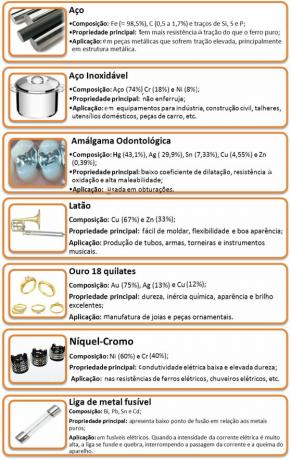Look on the Periodic Table for bronze. It found? That probably won't happen, but why if bronze has practically all the characteristics of the elements of the metal group?
What happens is that bronze is not a metal, much less a chemical element. In reality it is a metallic alloy.

For example, bronze, mentioned above, is a metallic alloy in which copper (Cu – 90%) and tin (Sn – 10%) are mixed.
The production of this and other metallic alloys normally takes place by heating the metals together, until they fuse and mix completely; followed by its cooling and solidification.
In our daily life, the presence of these alloys is very common, as they can have their properties widely changed through the process used in their preparation and also by the proportion in which these elements are mixed together. Because of this factor, alloys often end up being more effective than pure metals and are prepared for various purposes and uses.
For example, pure iron oxidizes easily with air, magnesium is very reactive and flammable, gold and silver are soft, etc. Thus, by mixing these metals with other metals or with other elements, it is possible to obtain materials with the desired properties, such as greater hardness, less reactivity and so on.
Let's look at some examples below:

By Jennifer Fogaça
Graduated in Chemistry
Source: Brazil School - https://brasilescola.uol.com.br/quimica/ligas-metalicas.htm

